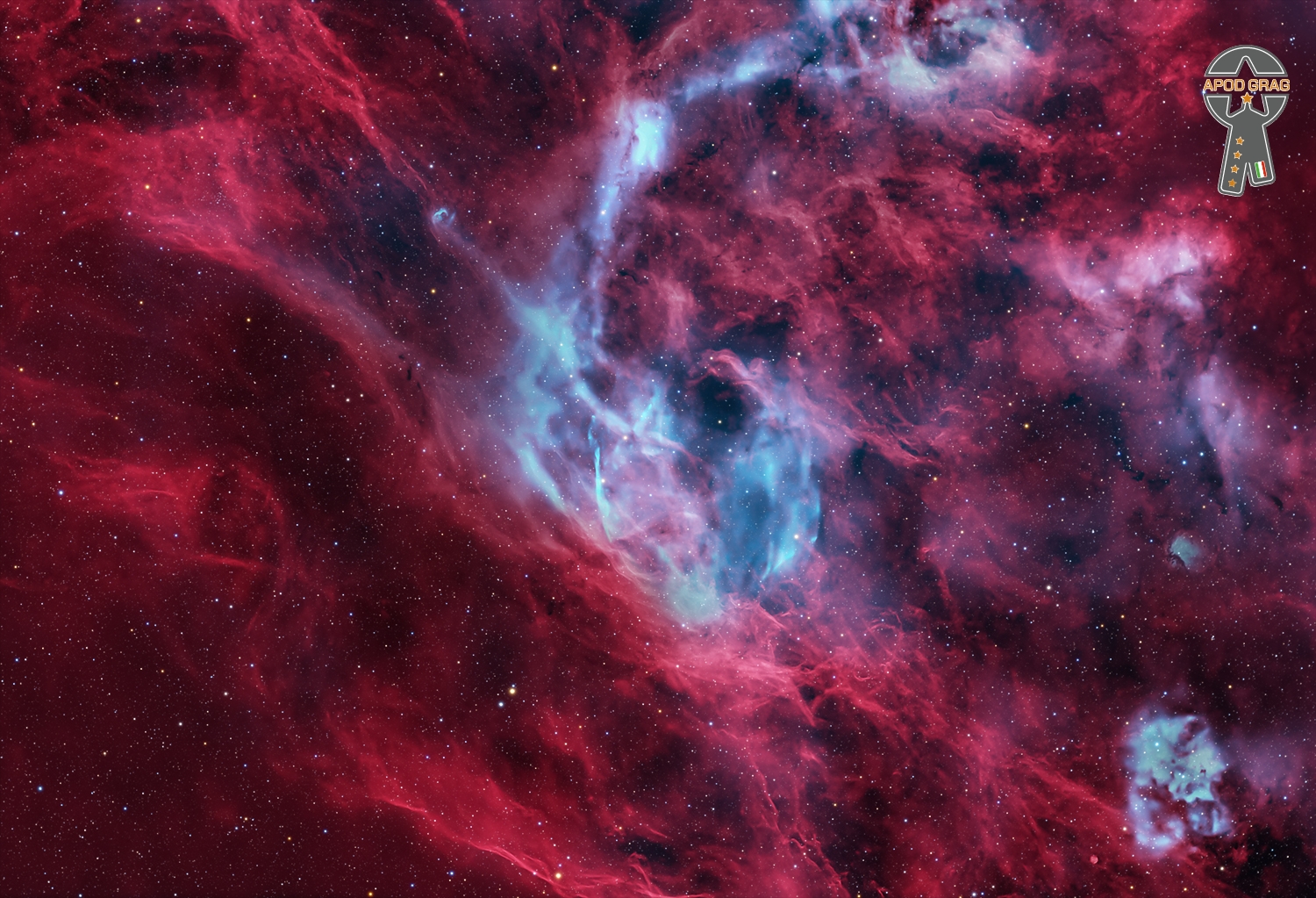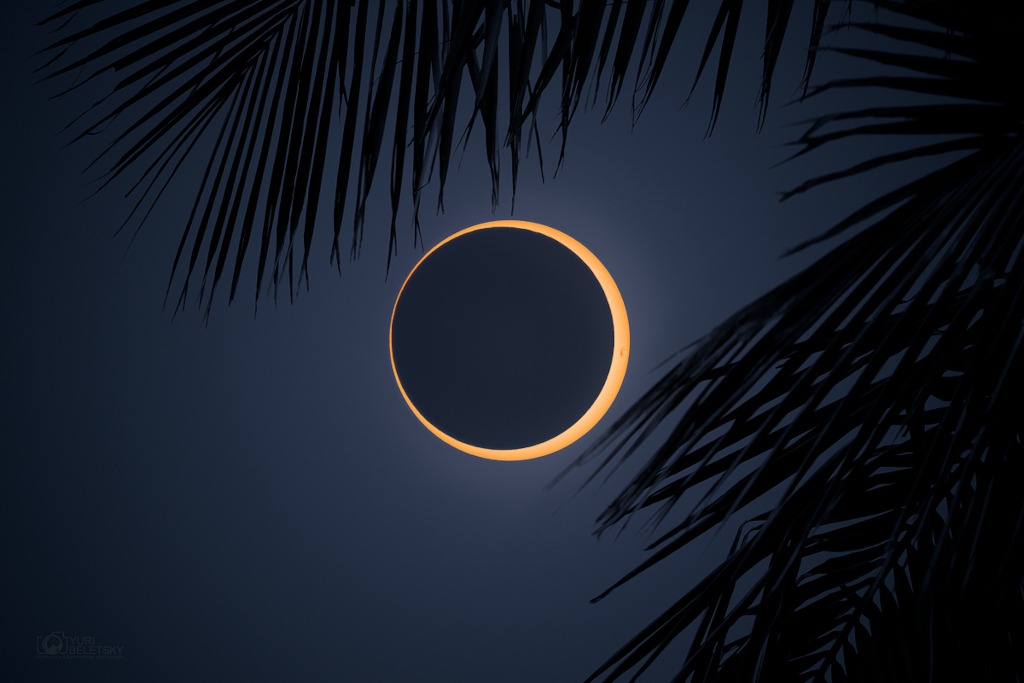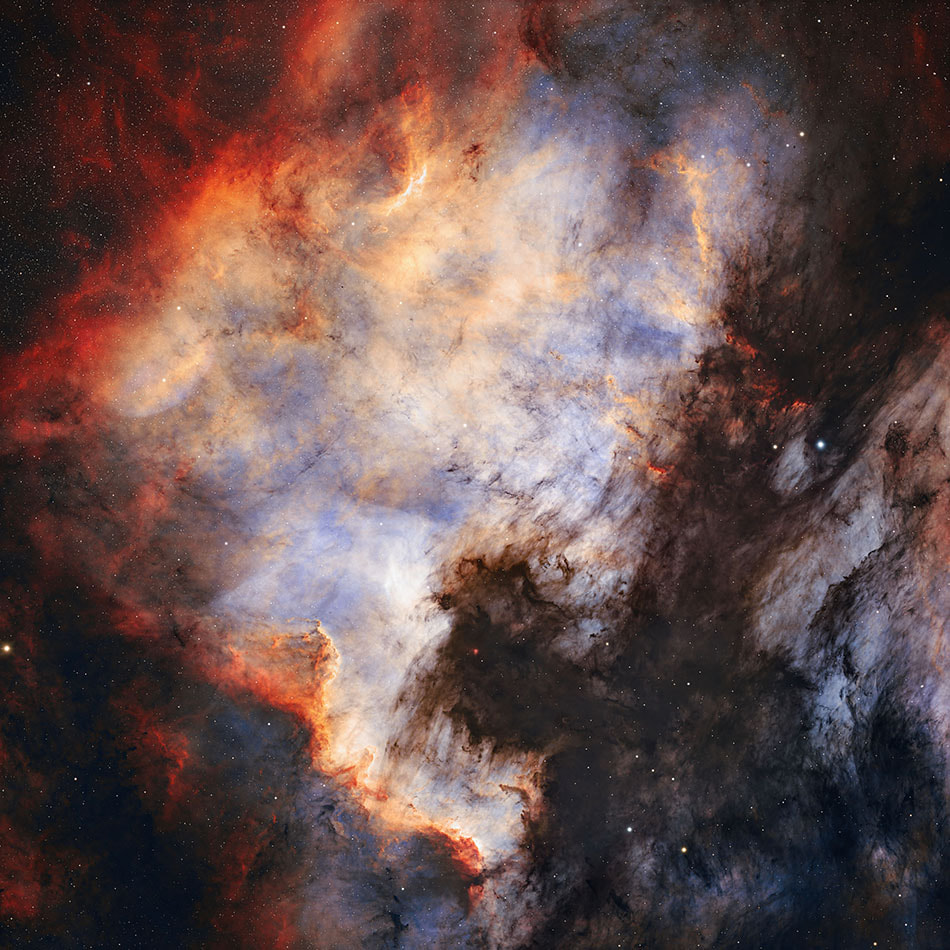Blog
Saturday October 12th 2024 4pm Yom Kippur service. Accompaniment with Jennifer Strauss-Klein, Tami Morse, Pat O’Keefe, Dave Burk and mick laBriola.
more...
In an area of the Cygnus constellation just west of Deneb, dominated by strong Ha emission in the background, making a characteristic three-dimensional effect, is this weak and beautiful SNR (also known as G82.2+5.3, CTB88 or W63) emitting in the optical range mainly in Oiii, even some Ha filaments are visible.
It is believed to have been the result of a SN between 14,000 and 21,000 years ago. It has a perspective size of about 86′ x 65′ and real dimensions of about 150 light years in diameter. Its filaments expand at a speed ranging between 35 and 70 km/s.
The SNR is about 5,000 light years away.

James “Sugar Boy” Crawford, Jr. (October 12, 1934 – September 15, 2012) was an American R&Bmusician based in New Orleans. He was the author of “Jock-A-Mo” (1954), which was later rerecorded as “Iko Iko“ by the Dixie Cups, and became a huge hit. The song was recorded by many other artists, including Dr. John, Belle Stars, the Grateful Dead, Cyndi Lauper, and (as “Geto Boys”) by Glass Candy.
Starting out on trombone, Crawford formed a band, which a local DJ, Doctor Daddy-O, named the Chapaka Shawee (Creole for “We Aren’t Raccoons”), the title of an instrumental that they played. Crawford recalled, “During high school we had a little band, nothing real organized at first. I was back playing piano… The other fellows in the band were Edgar “Big Boy” Myles, Warren Myles, Nolan Blackwell, Irving “Cat” Banister, and Alfred Bernard- just a bunch of youngsters having fun.” The group was signed by Chess Records president Leonard Chess and was renamed Sugar Boy and his Cane Cutters.
His song “Jock-A-Mo” became a standard at the New Orleans Mardi Gras, but Crawford disappeared from public view. In a 2002 interview for Offbeat magazine, he described how his career came to an abrupt halt in 1963, after a severe beating at the hands of state troopers incapacitated him for two years, forcing him to leave the music industry. In 1969, he decided to sing only in church. In 2012, he made a guest appearance singing gospel in an episode of the HBO series Treme. He died one month before the episode aired. James “Sugar Boy” Crawford was also Inducted into The Louisiana Music Hall Of Fame.
Crawford appeared on the 1995 album Let Them Talk, by Davell Crawford, his grandson. He made some stage appearances with Davell, including one at the New Orleans Jazz & Heritage Festival in 1996 and at the seventh annual Ponderosa Stomp in April 2008.
Among the artists Crawford recorded with was Snooks Eaglin.
Crawford died after a brief illness in a hospice in 2012, aged 77.
more...Napoleon Brown Goodson Culp (October 12, 1929 – September 20, 2008) better known by his stage name Nappy Brown, was an American R&B singer. His hits include the 1955 Billboard chart No. 2 “Don’t Be Angry“, “Little By Little”, and “Night Time Is the Right Time“. His style was recognizable; Brown used a wide vibrato, melisma, and distinctive extra syllables, in particular, “li-li-li-li-li.”
Brown was the son of Kathryn Culp and Sammie Lee Brown. After his mother died he was brought up by Fred and Maggie Culp. They attended Gethsemane AME Zion Church and he attended school in Charlotte, North Carolina. He began his career singing gospel music before switching to R&B. In 1954 he won a recording contract with Savoy Records, which yielded a series of hits, including “Don’t Be Angry” (No. 2 R&B, No. 25 pop, 1955), “Pitter Patter” (No. 10 R&B, 1955), “Little By Little” (No. 57 pop, 1956), and “It Don’t Hurt No More” (No. 8 R&B, No. 89 pop, 1958). Brown was among the biggest stars in R&B, frequently touring with the revues of Alan Freed.
His songs, along with those of his peers and contemporaries (such as Little Richard, Chuck Berry, and Fats Domino), were among the first wave of African-American pop music to become noticed and popular with white audiences. Elvis Presley reportedly used to see Brown perform whenever he appeared in Memphis. In addition to Brown’s influence on blues music, and 1950s R&B and pop, Brown’s powerful and protean voice, combined with his distinctive emotive style, is widely viewed as a key link in the development of soul music.
more...Robert Lewis Jones (October 12, 1925 – April 2, 1996 Decatur, GA), known as both Guitar Gabriel and Nyles Jones, was an American blues musician. Gabriel’s unique style of guitar playing, which he referred to as “Toot Blues”, combined Piedmont, Chicago, and Texas blues, as well as gospel, and was influenced by artists such as Blind Boy Fuller and Reverend Gary Davis. After hearing of Guitar Gabriel from the late Greensboro, North Carolina blues guitarist and pianist, James “Guitar Slim” Stephens, musician and folklorist Tim Duffy located and befriended Gabriel, who was the inspiration for the creation of the Music Maker Relief Foundation. Gabriel wore a trademark white sheepskin hat, which he acquired while traveling and performing with Medicine Shows during his late 20s.
more...Frank Floyd, known as Harmonica Frank (October 11, 1908 – August 7, 1984) was an American blues singer, guitarist and harmonicist.
Frank Floyd was born in Toccopola, Mississippi, the son of itinerant parents who separated without giving him a name, though he is recorded in the 1910 census as Shankles Floyd. He was raised by his sharecropping grandparents, who died while he was a teenager. He taught himself to play harmonica when he was 10 years old, and he eventually learned guitar. He gave himself the name Frank Floyd, and began performing in the 1920s for traveling carnivals and medicine shows.
He learned many types of folk music and became a mimic, effortlessly switching from humorous hillbilly ballads to deep country blues.
With his self-taught harmonica technique, he was a one-man band, able to play the instrument without his hands or the need for a neck brace. While also playing guitar, he perfected a technique of manipulating the harmonica with his mouth while he sang out of the other side. He could also play harmonica with his nose and thus play two harmonicas at once, a skill he shared with blues harp players Walter Horton and Gus Cannon’s partner Noah Lewis.
more...Alfred “Tubby” Hall (October 12, 1895 – May 13, 1945) was an American jazz drummer.
Hall was born in Sellers, Louisiana; his family moved to New Orleans in his childhood. His younger brother, Minor “Ram” Hall, also became a professional drummer. He played in many marching bands in New Orleans, including with Buddie Petit.
In March 1917, Tubby Hall moved to Chicago, where he played with Sugar Johnny Smith. After two years in the United States Army, he returned to playing in Chicago, mostly with New Orleans bands, joining Carroll Dickerson‘s Orchestra (recording with it in 1927) and later with the groups of King Oliver, Jimmie Noone, Tiny Parham, Johnny Dodds. Noted swing and big-band drummer Gene Krupa said that Hall and Zutty Singleton “were great! They knew every trick and just how to phrase the parts of the choruses behind the horns, how to lead a man in, what to do at the turn-arounds, when to use sticks and when to use brushes, when to go for the rims or the woodblocks, what cymbals are for.”
He is seen in Armstrong’s movies of the early 1930s, including the live action and Betty Boop cartoon I’ll Be Glad When You’re Dead, You Rascal You(1932) and A Rhapsody in Black and Blue (1932), made by Paramount. Only Armstrong and Hall got closeups in the two films, and both got their faces transposed with those of racially stereotyped “jungle natives” in the cartoon. Hall morphs from a jazz drummer to a cannibal stirring a cooking pot with two wooden sticks.
His drumming style was forceful and sober, generally maintaining a constant tempo on the snare. Jazz critic Hugues Panassié considered him one of the three greatest jazz drummers of his generation, along with Zutty Singleton and Warren “Baby” Dodds.
Tubby Hall died in Chicago.
more...October 12th 1946
Jay Epstein has put in several decades performing, recording, & touring in this jazz game. After college, I studied polyrhythmic concepts in Manhattan with Barry Altschul, the drummer in Chick Corea’s Circle. Lived in Hollywood, Oklahoma City, Montana, Miami, Minneapolis, and played in house bands for 5 years on several cruise ship lines. Been on 7 European tours with pianists Bill Carrothers & Giacomo Aula. Shared a few choruses with Rocky Robbins, Barney Kessel, Roseanna Vitro, Manfredo Fest, Sheila Jordan, Terry Gibbs, Greg Abate, Claudio Roditi, Gary Foster, Eric Alexander, Richie Cole, JoAnne Brackeen, Ernie Watts, Wayne Johnson, Karrin Allyson, Kenny Werner, Howard Levy, Bruce Henry, Toots Thielemans, Avashai Cohen, Bob Dorough, Marc Ribot, and Sarah Vaughan. My CDs, ‘Long Ago’ & ‘Easy Company’, featuring bassist Anthony Cox and pianist Bill Carrothers, have garnered luminous reviews in the international press. Current bands include Red Planet, Framework, Firebell, Tall Tales, Andrew Walesch, Sam Miltich, & Tim Sparks. I’ve endorsed Bosphorus Cymbals since 1997.
more...
From 2014 a decade ago. The Nyabinghi Collection Keta, Fonde, Buff, Lumina, Keta drums flashing the Red, Gold & Green

The second solar eclipse of 2024 began in the Pacific. On October 2nd the Moon’s shadow swept from west to east, with an annular eclipse visible along a narrow antumbral shadow path tracking mostly over ocean, making its only major landfall near the southern tip of South America, and then ending in the southern Atlantic. The dramatic total annular eclipse phase is known to some as a ring of fire. Also tracking across islands in the southern Pacific, the Moon’s antumbral shadow grazed Easter Island allowing denizens to follow all phases of the annular eclipse. Framed by palm tree leaves this clear island view is a stack of two images, one taken with and one taken without a solar filter near the moment of the maximum annular phase. The New Moon’s silhouette appears just off center, though still engulfed by the bright disk of the active Sun.

Lester Bowie (October 11, 1941 – November 8, 1999) was an American jazz trumpet player and composer. He was a member of the Association for the Advancement of Creative Musicians and co-founded the Art Ensemble of Chicago.
Born in the historic village of Bartonsville in Frederick County, Maryland, United States, Bowie grew up in St Louis, Missouri. At the age of five, he started studying the trumpet with his father, a professional musician. He played with blues musicians such as Little Milton and Albert King, and rhythm and blues stars such as Solomon Burke, Joe Tex, and Rufus Thomas. In 1965, he became Fontella Bass‘s musical director and husband. He was a co-founder of Black Artists Group (BAG) in St Louis.
In 1966, he moved to Chicago, where he worked as a studio musician, and met Muhal Richard Abrams and Roscoe Mitchell and became a member of the AACM. In 1968, he founded the Art Ensemble of Chicago with Mitchell, Joseph Jarman, and Malachi Favors. He remained a member of this group for the rest of his life, and was also a member of Jack DeJohnette‘s New Directions quartet. He lived and worked in Jamaica and Nigeria, and played and recorded with Fela Kuti. Bowie’s onstage appearance, in a white lab coat, with his goatee waxed into two points, was an important part of the Art Ensemble’s stage show.
In 1984, he formed Lester Bowie’s Brass Fantasy, a brass nonet in which Bowie demonstrated jazz’s links to other forms of popular music, a decidedly more populist approach than that of the Art Ensemble. With this group he recorded songs previously associated with Whitney Houston, Michael Jackson, and Marilyn Manson, along with other material. His New York Organ Ensemble featured James Carter and Amina Claudine Myers. In the mid-1980s, he was also part of the jazz supergroup The Leaders. Featuring tenor saxophonist Chico Freeman, alto saxophonist Arthur Blythe, drummer Famoudou Don Moye, pianist Kirk Lightsey, and bassist Cecil McBee. At this time, he was also playing the opening theme music for The Cosby Show. Bowie died of liver cancer in 1999 at his Clinton Hill, Brooklyn, New York house he shared with second wife Deborah for 20 years. The following year, he was inducted into the Down Beat Jazz Hall of Fame.
more...Billy Higgins (October 11, 1936 – May 3, 2001) was an American jazz drummer. He played mainly free jazz and hard bop.
Higgins was born in Los Angeles, California, United States. Higgins played on Ornette Coleman‘s first records, beginning in 1958. He then freelanced extensively with hard bop and other post-bop players, including Donald Byrd, Dexter Gordon, Grant Green, Herbie Hancock, Joe Henderson, Don Cherry, Paul Horn, Milt Jackson, Jackie McLean, Pat Metheny, Hank Mobley, Thelonious Monk, Lee Morgan, David Murray, Art Pepper, Sonny Rollins, Mal Waldron, and Cedar Walton. He was one of the house drummers for Blue Note Records and played on dozens of Blue Note albums of the 1960s. He also collaborated with composer La Monte Young and guitarist Sandy Bull.
more...Arthur Blakey (October 11, 1919 – October 16, 1990 Pittsburgh, PA) was an American jazz drummer and bandleader. He was also known as Abdullah Ibn Buhaina after he converted to Islam for a short time in the late 1940s.
Blakey made a name for himself in the 1940s in the big bands of Fletcher Henderson and Billy Eckstine. He then worked with bebop musicians Thelonious Monk, Charlie Parker, and Dizzy Gillespie. In the mid-1950s, Horace Silver and Blakey formed the Jazz Messengers, a group which he led for the next 35 years. The group was formed as a collective of contemporaries, but over the years the band became known as an incubator for young talent, including Freddie Hubbard, Wayne Shorter, Lee Morgan, Benny Golson, Kenny Dorham, Hank Mobley, Donald Byrd, Jackie McLean, Johnny Griffin, Curtis Fuller, Chuck Mangione, Chick Corea, Keith Jarrett, Cedar Walton, Woody Shaw, Terence Blanchard, and Wynton Marsalis. The Biographical Encyclopedia of Jazz calls the Jazz Messengers “the archetypal hard bopgroup of the late 50s.”
Blakey was inducted into the Down Beat Jazz Hall of Fame (in 1981). Posthumously, he was inducted into the Modern Drummer Hall of Fame in 1991 and the Grammy Hall of Fame (in 1998 and 2001). He was awarded the Grammy Lifetime Achievement Award in 2005.
more...There are two parts to a Fandangos de Huelva, including the estribillo, a rhythmic chordal refrain played on the guitar with or without singing, and the coplas. These two parts alternate, similar to the chorus and verse in a folk song. The Fandangos de Huelva are usually sung aflamencada ( in the flamenco style.) For the singer, the rhythm has a definite 3/4 feel, but with accents on 3 and 5, and with count 6 held at the end of the 2nd set of 6 counts (see the rhythmic example and description in the Compás sample above). Letras for Fandangos de Huelva have to do with the annual pilgrimmage to Rocio and the April and May fairs, both events held in Spain after Semana Santa. Many letras have religious significance, including the estribillo example below, which alludes to the statue of the Virgin Mary carried to the same religious site every year. When esconsed at the site, the statue becomes a sanctuary for her and for all those who travel there.
more...The North America Nebula (NGC 7000 or Caldwell 20) is an emission nebula in the constellationCygnus, close to Deneb (the tail of the swan and its brightest star). It is named because its shape resembles North America. On October 24, 1786, William Herschel observing from Slough, England, noted a “faint milky nebulosity scattered over this space, in some places pretty bright.” The most prominent region was catalogued by his son John Herschel on August 21, 1829. It was listed in the New General Catalogueas NGC 7000, where it is described as a “faint, most extremely large, diffuse nebulosity.” 2200 ly.

more...
Ed Volker, aka Zeke (born October 10, 1948) is a singer, songwriter and keyboard player from New Orleans, Louisiana, and a founding member of the legendary New Orleans band, The Radiators. Volker is a prolific songwriter who has written hundreds of songs, including the majority of The Radiators’ original material, as well as many other songs that he reserves for his solo act. Ed Volker on keys/vocals, Peter Ostroushko mandolin/violin, mick laBriola percussion & congas.
more...More Posts
- Daily Roots with Osmond Collins
- John Prine Memorial
- Music for Surviving the Pandemic
- The Cosmos with IC 2944
- Stephen Marley Day
- Joe Bonner Day
- Tito Puente Dia
- Lionel Hampton Day
- World Music with Otava Yo
- Daily Roots with Merger
- Music for Surviving the Pandemic
- The Cosmos with Caldwell 49
- Dick Cully Day
- Dudley Moore Day
- Bernie Worrell Day
- Alexis Korner Day
- World Music with Garmarna
- Daily Roots with Princess Kazayah
- Music for the Pandemic
- The Cosmos with NGC 2273
